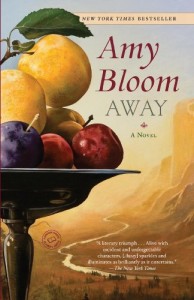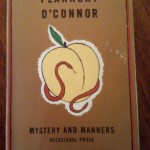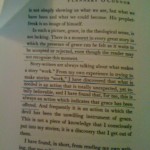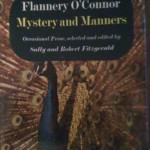Gusev: “The sea has no sense and no pity.”
Posted in Reading (as a writer) on February 1st, 2010 by dylanI had trouble packing for L.A. last night. Not shoe trouble, I always have shoe trouble, but what-to-read-to-my-mother trouble. She’s in the I.C.U. at St. John’s Hospital, Santa Monica, “nearly comatose,” my father says.
I always have shoe trouble, but what-to-read-to-my-mother trouble. She’s in the I.C.U. at St. John’s Hospital, Santa Monica, “nearly comatose,” my father says.
“You mean heavily sedated?” I asked from DC.
“I’m staying in the room with her,” my father says, “and she doesn’t know I’m here.” Comatose, sedated, what’s the damn difference? He loathes the machine that “breathes her” and he loathes the machine that delivers liquid Nutren Replete. Each snakes a tentacle down her nose or throat.
I flew in this morning to be with my father, and, I thought, to read to my mother. Even people under anesthesia supposedly hear their surgeon’s comments, so why not nourish my mother’s delicious and crystalline mind? She is taking (is taking, is taking) a class on Pushkin at UCLA; she has all the books by and on Pushkin a girl could want. So: Chekhov? 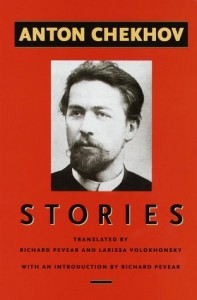 But often someone is going to die in Chekhov. Or is living in privation. Is that right? Packing under duress, I suddenly can’t remember a word of Chekhov (below), despite three translations on our shelves. Packing, I’m frantic for engaging books that won’t make my mom laugh—what if she chokes on a tube?—and in which no one lives in privation, or dies.
But often someone is going to die in Chekhov. Or is living in privation. Is that right? Packing under duress, I suddenly can’t remember a word of Chekhov (below), despite three translations on our shelves. Packing, I’m frantic for engaging books that won’t make my mom laugh—what if she chokes on a tube?—and in which no one lives in privation, or dies.
Because privation might make her sad. Privation runs back generations in our family. When my mom’s mother was a girl in Cominets Podalsk, Russia, she and my great-grandmother carried other people’s laundry on their back to a lake, scrubbed it in cold water, wrung it out, and carried it home on their backs, heavy and wet. This went on until my grandmother was old enough to quit school (about the equivalent of third grade, I think) and walk to work in early darkness, alone, past a church graveyard to a cigarette factory. It was freezing; the children in the factory needed gloves. But with gloves one can’t roll cigarettes. So no gloves.
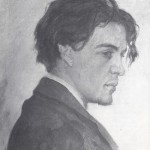 So no privation.
So no privation.
I consider Anne Carson’s The Beauty of the Husband. It is the story, in what Carson calls “tangos,” of a marriage seen through to its end. What if my father turns the book over and reads this, and wonders if his own marriage is being breathed up by a machine? So no Anne Carson. I love the verbal delicacies in two recently reread story collections: Maile Meloy’s Half in Love, and Pia Ehrhardt’s Famous Fathers, but both write about adultery, and my parents will be 55 years intertwined in July.
The perfect choice would be Toni Morrison’s Song of Solomon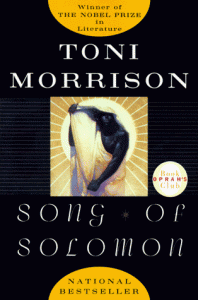 , which we both love, endlessly. I’ve read it twelve times. But my mother so connected with certain scenes, and re-tells them with such raw emotion, that I would not get through them. Pilate, at her daughter Hagar’s funeral, saying and singing the words: My baby girl. My baby girl. My baby girl. My baby girl. Looking into each person’s eyes in that church, saying it differently each time, asking it, praying it—my baby girl, my baby girl—and then calling out: And she was loved!
, which we both love, endlessly. I’ve read it twelve times. But my mother so connected with certain scenes, and re-tells them with such raw emotion, that I would not get through them. Pilate, at her daughter Hagar’s funeral, saying and singing the words: My baby girl. My baby girl. My baby girl. My baby girl. Looking into each person’s eyes in that church, saying it differently each time, asking it, praying it—my baby girl, my baby girl—and then calling out: And she was loved!
Mom, forgive me, I would break down.
Impossible to go wrong with the exquisite Portrait of the Artist as a Young Man. But Stephen is beaten at Clongowes, I think, for losing his glasses. I think. Even if I misremember, could his unhappiness carry some resonance from my mother’s childhood?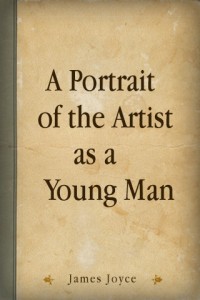
After some internal debate over which of three editions to pack (vintage, fragile, or tattered), I pack Portrait from sheer love of both Joyce and Stephen. But wait—if Ulysses opens with Stephen newly motherless, does his mother die at the end of Portrait?
Surely we won’t get there. Surely by then my mother will be demanding coffee and Pushkin and Dr. Dog, the therapy dog from her last hospitalization.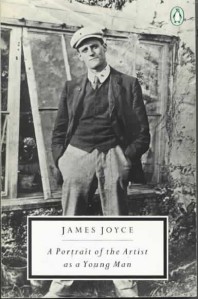
Which was only a week ago.
I add two poetry collections by Amy Gerstler: Medicine and the new (signed!) Dearest Creature. I will get to say “skeleton tea” out loud, with envious enunciation. And my father will get to voice his disappointment with modern poetry and hark back to his hard-drinking days in Scotland with Hugh MacDiarmid and that crowd.
In lieu of the Ferragamo pumps, I slot in Zadie Smith’s On Beauty, because Smith is funny and smart and spirited and so much better-read than I am—she and my mother might commune across the beeping machines. (My mother once commented that I could not call myself educated if I had not read Don Quixote; mortified, I dove for Don Quixote and found it so sad I couldn’t finish it. Zadie Smith has undoubtedly delivered entire lectures on Don Quixote.)
“Be careful,” my husband warned when he spotted Zadie in my suitcase. “An old woman dies in that book.” I’d forgotten.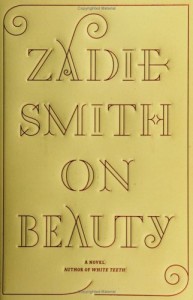
And then I understood that it was hopeless.
Because an old woman dies in every book worth reading. Or a young man is punished for losing his glasses, or a marriage tangoes off a cliff, or a dying man drags himself out on deck one last time to look at the fathomless ocean—which Chekov story is that? Is it “Gusev?” Why can I remember nothing I’ve read at this moment, just titles and vague images, just a snapshot from 23 years ago in which my mother, with the sun full on her yellow hair and her apricot-colored skin and her maroon silk suit, reaches out to touch her daughter’s face as if all that brilliance and all the secrets of long marriage could actually stream from her fingertips to my flesh?
Perhaps it did. It was my wedding day and I am still married. My mother would know if that story was “Gusev.” All I can do is pack the wrong books Saturday night, and show up Sunday in the I.C.U., where I discover that I have no voice for reading at all, no will to do anything but smooth her sunstruck hair and tell her I am here.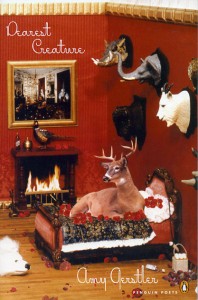
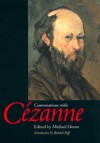


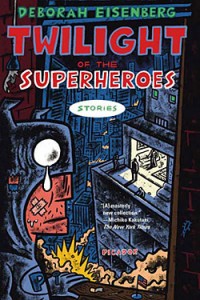

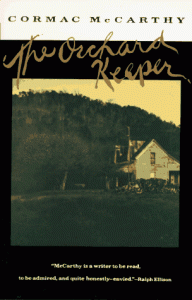
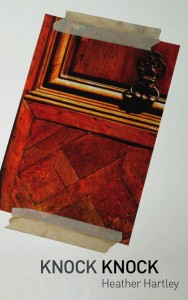

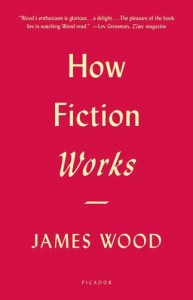 Ultimately whatever the character observes will reveal her–sometimes what’s being described is secondary.
Ultimately whatever the character observes will reveal her–sometimes what’s being described is secondary.